|
|
|
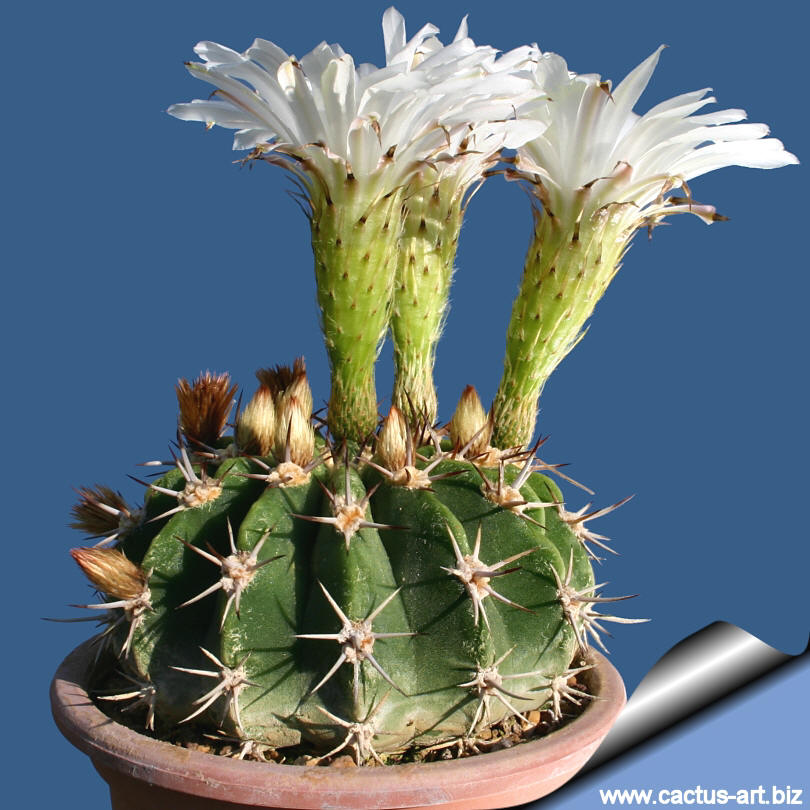
Acanthocalycium peitscherianum
(Echinopsis peitscheriana)
|
|
Description:
E.
peitscherianum are fairly
slow growing solitary cactus and quite variable especially for the
length of the spines (depending on population). This species is less
often seen in cultivation than its relative
A. violaceum.
Stems: Spherical or spherical flattened green to dull
greys-green.
Ribs: About 17-20
acute slightly notched up to one cm height.
Areoles: Elliptical, to yellowish-brown wool on the newer
areoles, about 6 mm long.
Central spines: 1-4 from 1 to 6 cm long straight or slightly
arched, awl shaped, brownish that turns grey as they ages, lowermost one
often directed downward.
Radial spines: 6 to 10 unequal shorter than the radials.
Flowers: 3 to 4 cm (or more) cm in diameter, funnelform to bell
shaped, erect, usually white, but also clear pastel-pink or lilac-pink.
Bud with long scales.
|
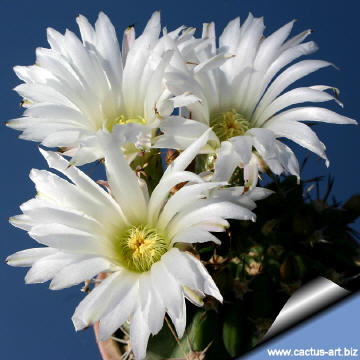 |
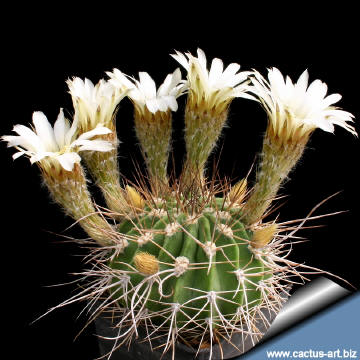 |
|
. |
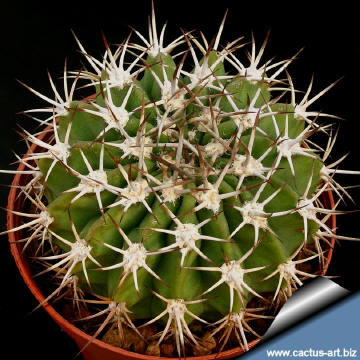 |
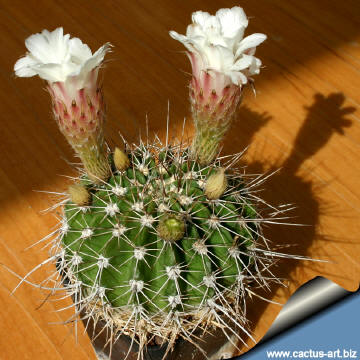
|
|
.
|
|
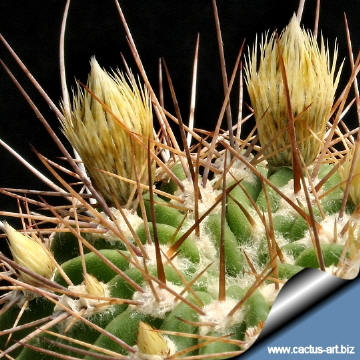 |
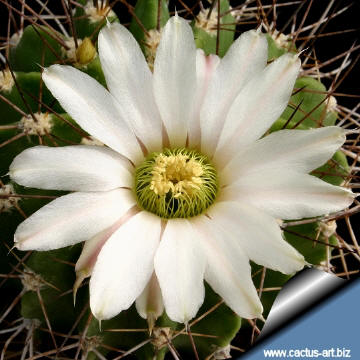 |
|
. |
|
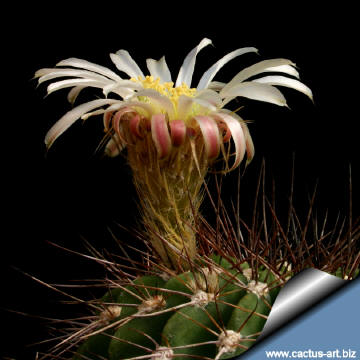 |
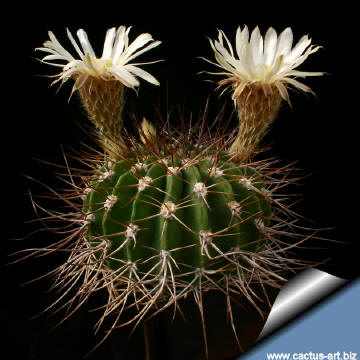 |
|
Advertising
|
|
|
|
|
Family:
Cactaceae
(Cactus
Family)
Scientific name: Acanthocalycyum peitscherianum
Backeberg in Backeberg et Knuth
In: Kaktus-ABC, p.
225, 412, 1935
Origin: Northern
Argentina (Cordoba, San Luis). Altitude about 1000 m.
Conservation status: Listed in
CITES appendix 2.
Synonyms:
-
Acanthocalycium klimpelianum (Weidlich & Werdermann)
Backeberg
-
Acanthocalycium spiniflorum (K. Sch.) Bkbg.
-
Echinopsis klimpeliana Echinopsis peitscheriana (Backeb.) Friedrich et Rowley
In: IOS Bulletin, 3:
97, 1974
-
Lobivia klimpeliana Lobivia spiniflora
var. peitscheriana (Backeb.) Rausch
In: Lobivia 85, p.
158, 1985-6
- Acanthocalycium
spiniflorum var. peitscherianum (Backeb.) Donald
In: Ashingtonia, 1:
116,1975 A
|
|
|
|
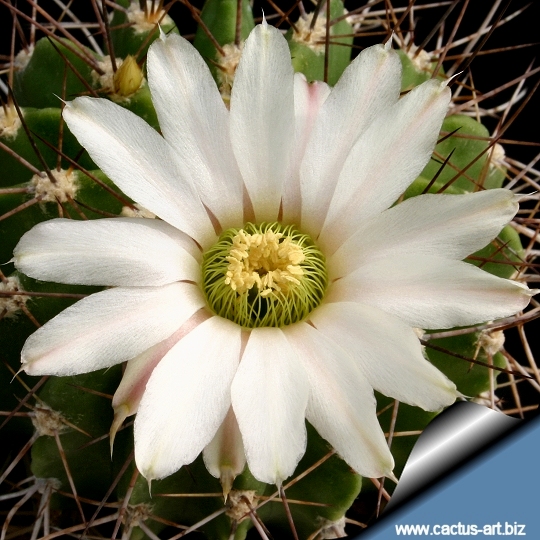
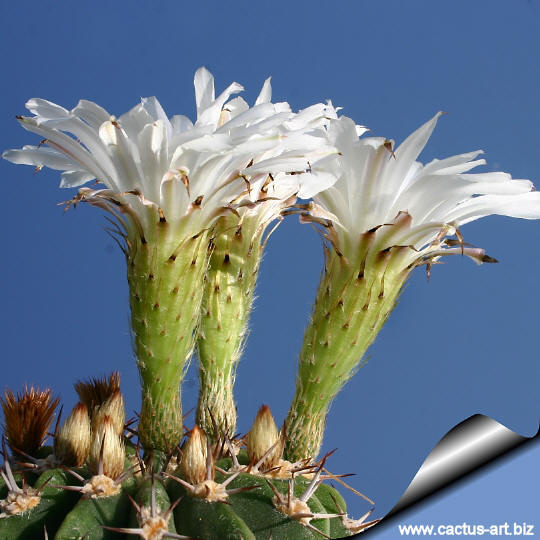
Spiny
buds.
Cultivation: It is a summer grower species
that offers no cultivation difficulties. Water regularly in summer (but
do not overwater ) needs good drainage and very porous, keep rather dry
in winter. Feed with a high potassium fertilizer in summer. It is quite
frost resistant if kept dry (hardy to -12° C or less ) Need a very
bright and airy
situations, full sun is indispensable to keep
plant compact with strong spines.
Propagation: Direct sow after last frost
as it seldom produces offsets.

 |
|